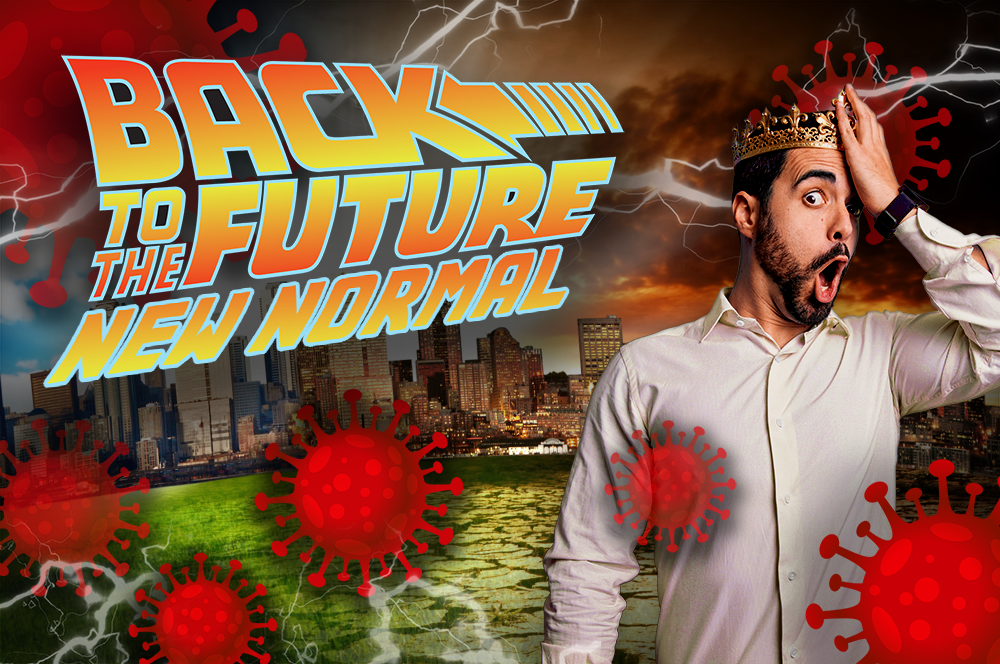Looking Back to the Past, Predictions of the End

What have we done? Whom has our selfish behaviour presently impacted, and will affect in the future? The part II of this Back to the Future New Normal saga will rise up environmental change related concerns, and how these will influence our new normal, when we are on a rapid pace creating playgrounds for new pandemics…
Generally speaking, scientists consider three different types of change that allow virulent pathogens to initiate a new move from an animal host to a human host: changes in the environment, in either host, or in the pathogen itself. Changes in the environment are usually the result of human activities. These human nature exploitation activities provide opportunities for pathogens to spill over from wild animals to people, especially when the natural disease resistance that may result from rich biological diversity is lost.
Frontier, United Nations Environmental Program -. 2016. Zoonoses: Blurred Lines of Emergent disease and Ecosystem Helth. The UNEP Frontiers report 2016, UNEP.
(Humans) destroy the natural buffer zones that would normally separate humans from animals, and create opportunities for pathogens to spill over from wild animals to people.
Robinson, Doreen. 2020. UN Enviroment, Coronaviruses: Are they here to stay?
Consulted on 2.7.2020
Climate change is a major factor for disease emergence. It influences the environmental conditions that can enable or disable the survival, reproduction, abundance, and distribution of pathogens, vectors, and hosts, as well as the means of disease transmission and the outbreak frequency. Growing evidence suggest that outbreaks or epidemic diseases may become more frequent as climate continues to change.
Frontier, United Nations Environmental Program -. 2016. Zoonoses: Blurred Lines of Emergent disease and Ecosystem Helth. The UNEP Frontiers report 2016, UNEP.
Climate change – primarily the result of greenhouse gas emissions – exacerbates the situation. Changes in temperature, humidity and seasonality directly affect the survival of microbes in the environment; and evidence suggests that disease epidemics will become more frequent, as the climate continues to change.
Robinson, Doreen. 2020. UN Enviroment, Coronaviruses: Are they here to stay?
Consulted on 2.7.2020
Changes in animal or human hosts are often the result of human action as well. Zoonotic transmission from wildlife hosts directly to human host is uncommon: domestic animals can bridge the gap.
Frontier, United Nations Environmental Program -. 2016. Zoonoses: Blurred Lines of Emergent disease and Ecosystem Helth. The UNEP Frontiers report 2016, UNEP.
Livestock often serve as an epidemiological bridge between wildlife and human infections, such as in the case of avian influenza. Pathogens first circulated in wild birds infected domestic poultry, and were then passed to humans. Proximity to different species through wet markets or consumption of wild animals can also facilitate animal to human transmission.
Robinson, Doreen. 2020. UN Enviroment, Coronaviruses: Are they here to stay?
Consulted on 2.7.2020
Changes in human host behaviours are also drivers of emerging zoonotic disease, including travel, conflict, migration, wildlife trade, globalization, urbanization, and changing dietary preferences.
Frontier, United Nations Environmental Program -. 2016. Zoonoses: Blurred Lines of Emergent disease and Ecosystem Helth. The UNEP Frontiers report 2016, UNEP.
Incubation – the time between human infection and the time when that human presents signs of infection – may last days or weeks; but millions of people, under normal circumstances, travel every day, from one country to another, in just hours. A disease that originates in one country can quickly spread to others, regardless of the distances between them. This is particularly visible in the rapid spread of COVID-19, which affected almost every country in the world within three months of the first reported case.
Robinson, Doreen. 2020. UN Enviroment, Coronaviruses: Are they here to stay?
Consulted on 2.7.2020
Yes, I know, and so do you, in your deepest thoughts, even if you don’t want to say it loud.
Environment and climate have been affected and changing during a long period of human history… But the fact is that we have boosted it to a never-before-seen speed in last century. And all of this because of human basic nature, that leads us to think that we are the king of the hill.
The only thing that matters is what I can do, regardless of how it will affect others… right?
What’s the story – morning glory?

Leave a Reply